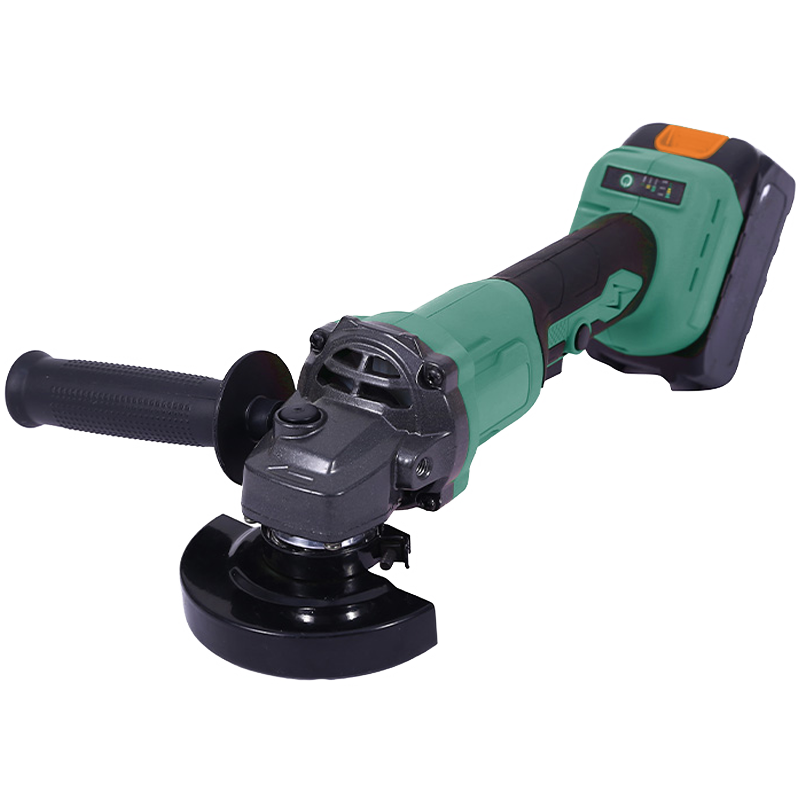The emergence of brushless motor technology and advanced battery systems has significantly altered the landscape of power tools, with angle grinders being a notable example. These tools, traditionally defined by their corded dependence and brushed motors, are now widely available in brushless and cordless configurations. Assessing the practicality of these modern grinders requires a balanced examination that moves beyond marketing claims to analyze their real-world performance, economic implications, and suitability for different user contexts. This analysis considers operational freedom, power delivery, maintenance demands, and total cost of ownership.

Part 1: Operational Freedom and Worksite Flexibility
The immediately apparent advantage of a cordless angle grinder is the elimination of the power cord, which directly impacts how and where the tool can be used.
1.1. Accessibility in Remote or Unpowered Locations
Cordless grinders are inherently practical for tasks in areas without readily available electrical outlets. This includes outdoor construction sites in their early phases, remote fabrication yards, agricultural settings for equipment repair, and demolition sites where power may have been disconnected. The ability to operate independently of grid power substantially expands the potential applications of the tool.
1.2. Enhanced Maneuverability and Safety
The absence of a cord removes a significant tripping hazard for both the user and others in the vicinity. It also eliminates the risk of accidentally cutting the power cord during operation, a common incident with corded models that can pose an electrical shock hazard. Users can move freely around a workpiece, up a ladder, or into tight spaces without managing a cable or requiring extension cords, a more efficient workflow.
1.3. The Logistical Constraint of Battery Power
This freedom is counterbalanced by the finite energy capacity of batteries. Practicality is contingent on having a sufficient supply of charged batteries to complete a task. For prolonged, high-demand grinding or cutting, the continuous runtime may be limited, work interruptions for battery swaps and recharging. This makes power management a critical part of planning for cordless tool use.
Part 2: Power and Performance Delivery
The core question for any cordless tool is whether it can deliver adequate performance compared to its corded counterparts. The integration of brushless motor technology is central to this capability.
2.1. Brushless Motor Efficiency
Brushless motors operate without physical brushes that transfer current to the motor's armature. This design reduces energy loss from friction and electrical arcing. Consequently, a larger proportion of the battery's energy is converted into rotational force at the wheel, resulting in a longer runtime per battery charge and more power output for a given battery size compared to a brushed cordless motor.
2.2. Electronic Performance Management
Modern brushless cordless grinders incorporate electronics that regulate power delivery. These systems can maintain a consistent speed under load, preventing the bogging down that can occur with simpler motors. While a high-amperage corded grinder may still achieve a higher sustained power, the performance gap for common tasks like cutting rebar, grinding welds, or bevelling metal has narrowed considerably with professional-grade brushless cordless models.
2.3. Suitability for Task Duration and Intensity
The practicality of the power delivery is task-dependent. For frequent, short-duration tasks or applications where portability is paramount, a brushless cordless grinder provides sufficient power. However, for continuous, heavy-duty applications such as profiling large steel plates or extensive masonry work, the sustained energy requirement may still favor a corded tool, as it provides unlimited runtime without the degradation in performance that occurs as a battery depletes.
Part 3. Maintenance and Longevity Considerations
The practical value of a tool is also measured by its reliability and the effort required to maintain it over its service life.
3.1. Reduced Maintenance with Brushless Design
The absence of carbon brushes in a brushless motor is a significant practical benefit. Brushed motors require periodic inspection and replacement of brushes, which are consumable parts. Brushless motors eliminate this maintenance task entirely. Furthermore, without the sparking and friction generated by brushes, the motor experiences less wear and heat buildup, which contributes to a longer operational lifespan.
3.2. Battery as a Central Component
The cordless system introduces a different maintenance focus: the battery platform. Lithium-ion batteries have a finite lifespan, measured in charge cycles, and their capacity will gradually diminish over time. Practical long-term ownership involves caring for the batteries—avoiding complete discharges, storing them in appropriate conditions, and planning for their eventual replacement, which represents a recurring cost not present with corded tools.



 English
English русский
русский Español
Español







